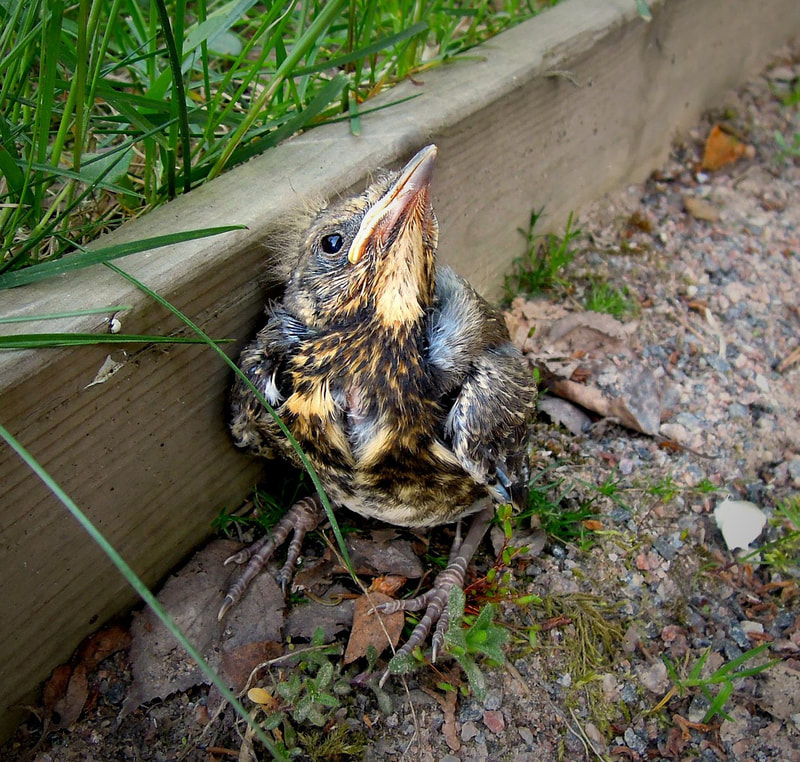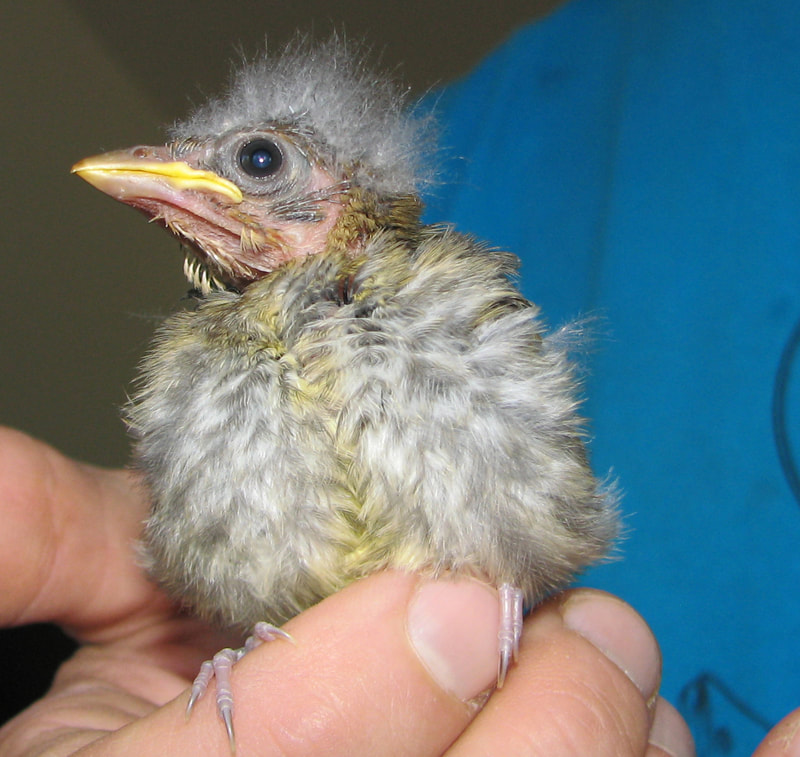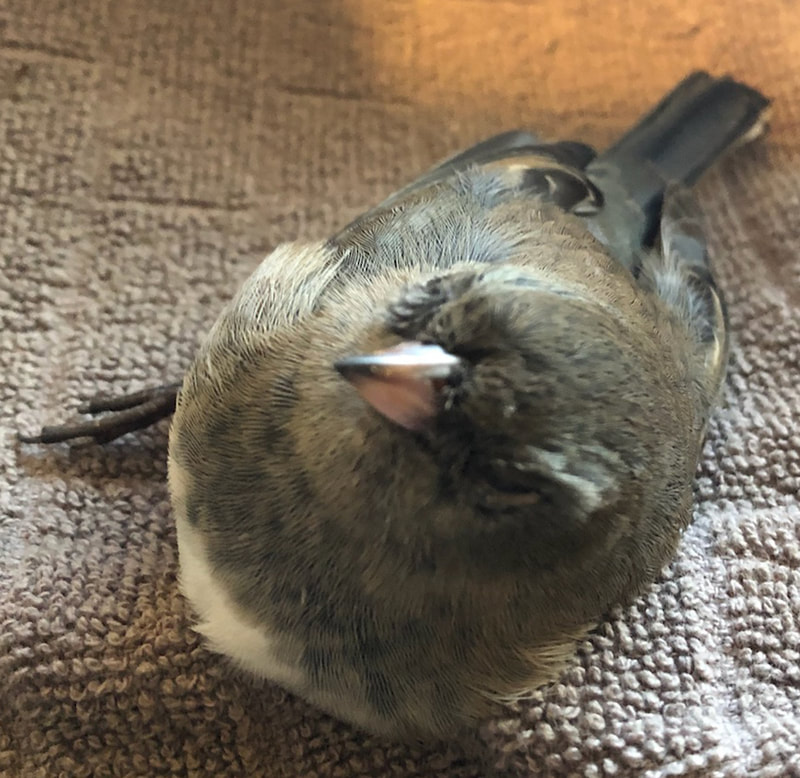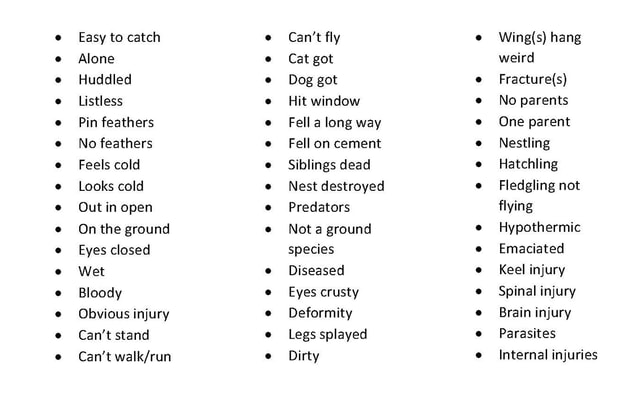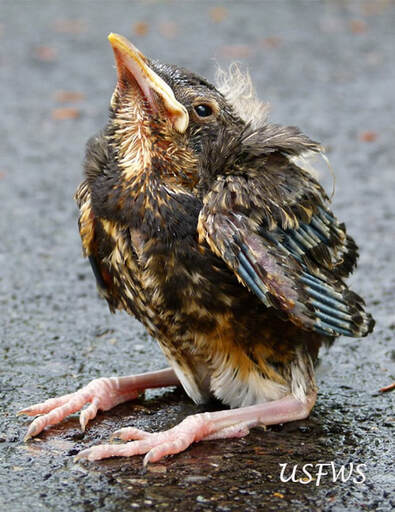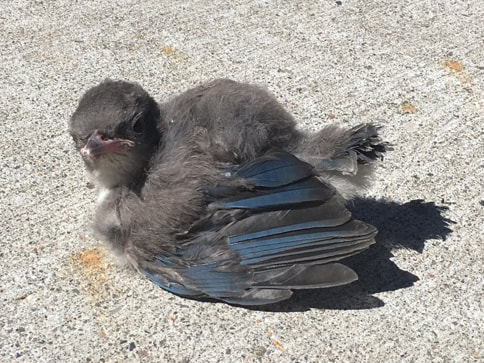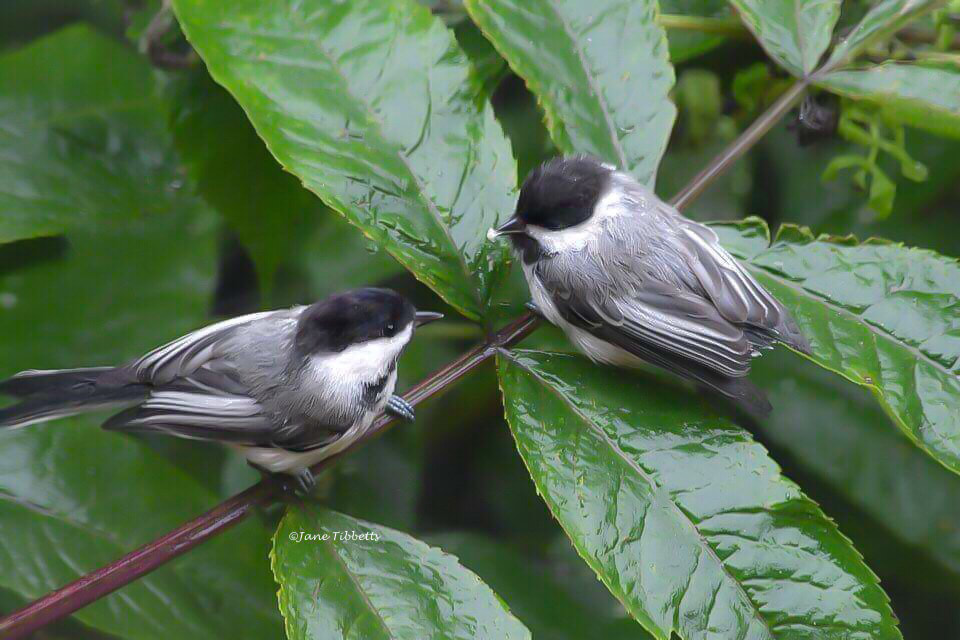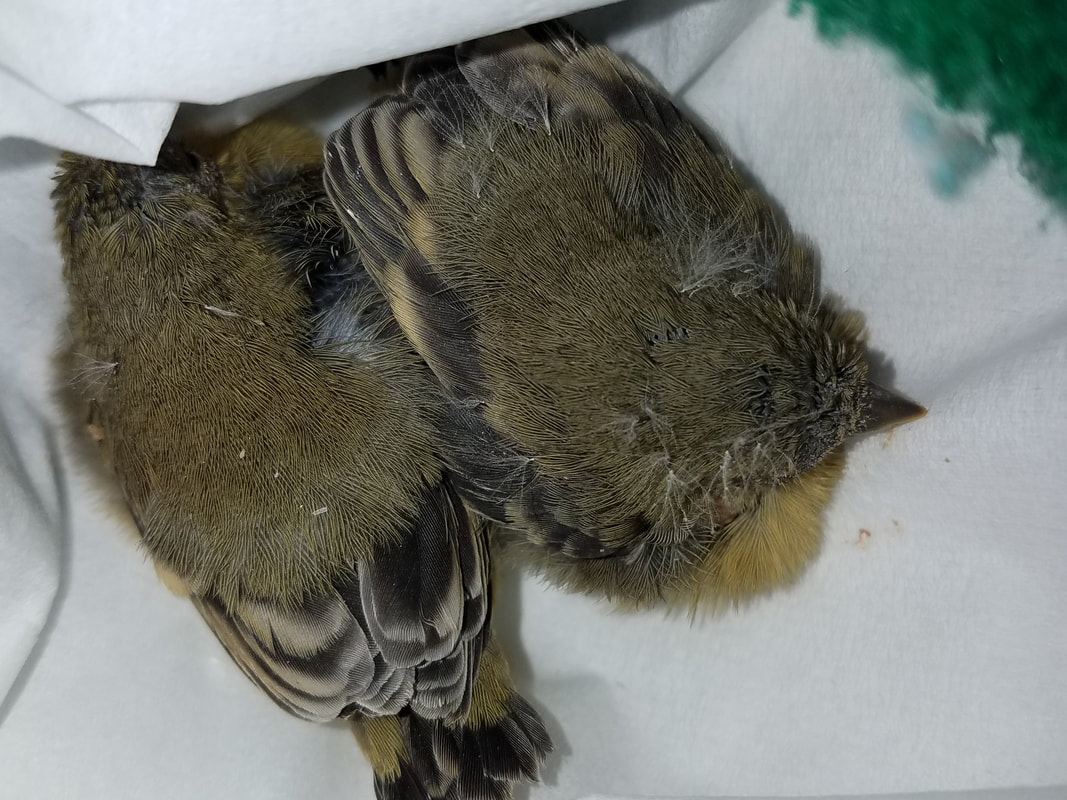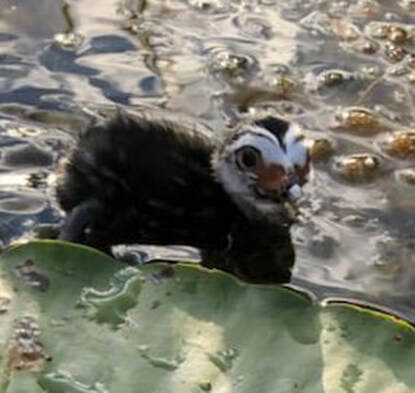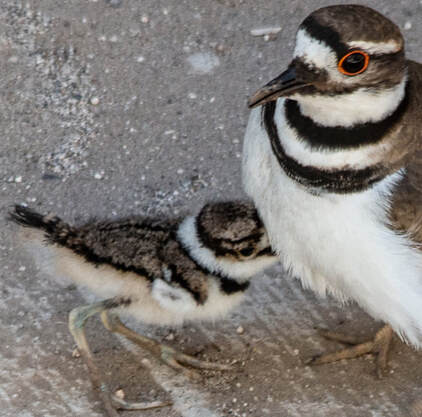PLEASE DONATE!
Wild birds in our community are counting on us for rescue and rehabilitation, but we can't do it without your help. Our care is neither free to us or funded by any agency. Your donation provides essential resources for the care and recovery of injured and orphaned birds. Join us in making a difference—donate now and give these birds the chance to thrive."
Wild birds in our community are counting on us for rescue and rehabilitation, but we can't do it without your help. Our care is neither free to us or funded by any agency. Your donation provides essential resources for the care and recovery of injured and orphaned birds. Join us in making a difference—donate now and give these birds the chance to thrive."
TEXT A PICTURE: OUR HELPING YOU STARTS HERE
DO NOT LET INJURED BIRDS GET AWAY!
DO NOT LET INJURED BIRDS GET AWAY!
541-728-8208
INSTRUCTIONS: Place bird in a small box or paper bag, on a paper towel or hand towel.
Place bird in a wam quiet room. Get bird warm unless it is over 80 degrees.
Place bird in a wam quiet room. Get bird warm unless it is over 80 degrees.
DO NOT FEED! DO NOT WATER (without consult first!
DO NOT LEAVE OUTSIDE TO SEE WHAT HAPPENS!
DO NOT TRY TO TREAT! DO NOT TOUCH/PET. DO NOT LET IT FLY AROUND, SIT ON YOU.
AFTER PICTURE, WE WILL CALL OR TEXT ON WHAT TO DO NEXT.
Rescue the bird if:
- Easy to catch
- Sitting or laying on the ground
- Sitting or lying out in the open
- Doesn't move when approached
- Seems 'tame' - no predator response
- A baby - nestling or fledgling that does not actively hop or fly away.
- Looks or known to be injured
- Cannot fly or cannot fly fully
- Hit a window - never let these birds fly off
- Caught by cat, dog, other predator
- Caught in glue or feathers contaminated
- Lost or can't find parents
Areas: Deschutes, Crook, Jefferson counties, plus Eastern and Southeastern Oregon. Other Oregon regions and USA - courtesy rescue information provided.
Ignore all 'Found a Baby Bird' infographics found on any other websites. These are inaccurate and will lead to baby bird deaths. Ignore all advice to leave a baby bird that is easy to catch and does not fly or flies poorly.
Ignore all 'Found a Baby Bird' infographics found on any other websites. These are inaccurate and will lead to baby bird deaths. Ignore all advice to leave a baby bird that is easy to catch and does not fly or flies poorly.
Adults
- Windows - YES, RESCUE ALL!
- Do NOT let window or other stunned birds fly off.
- Call or text us if any of the following apply:
- Can the bird stand, walk? Does not fly well or at all?
- Obvious wounds? Drooping wing? Listless? Bloody?
- Out of place - not where he should be.
Babies/Young
- Call or text us if any of the following apply:
- If you think something is off with a baby bird, it likely is.
- If the baby is sitting out in the open, not hidden, not moving.
- If the baby is not fully feathered, has bare patches, no tail, and downy tufts anywhere.
- If baby does not actively fly away or only flutters.
- Any baby at risk of immediate predation.
- Every species and circumstance is different, there are NO HARD RULES.
- Most babies who look like they have issues do. Often they are cold, dehydrated, hungry, injured.
Windows/cats/injuries
- RESCUE ALL: Never let a window stricken bird fly off.
- Flight does not mean a bird is healthy!
- MOST window-struck birds have injuries.
- Most can still fly after impact - but their survival is low if they fly away.
- Most birds cannot forage or feed themselves after an impact.
- Most cannot stay warm or cool after impact.
- Common injuries: concussion (95%), traumatic brain injury (TBI); fractures; hematomas & wounds; eye and spinal injuries; internal injuries, neurological injuries (torticollis), and more.
dUCKS/DUCK-LIKE BIRDS/SHOREBIRDS
- Call or text us if any of the following apply:
- Cold, listless, sedate, wet, dehydrated?
- Family or siblings dead, missing?
- Downy, walking young ducks, geese, shorebirds, quail away from family.
- Can't keep up with rest of family.
- Looks unwell, head tucked, sits a lot.
- A precocial bird is one born with downy feathers and can walk or swim.
Why Rescue - What befalls birds
Birds need help for many reasons.
When to Rescue a Baby Bird?
Most young birds who fledge (fly from nest) naturally can fly, fly partially, or flutter.
Most baby birds on the ground are likely to need help, except for healthy ground-feeding birds.
MYTHS
- Ignore all infographics on what to do if you find a baby bird!.
- Most baby songbirds should never be on the ground.
- Most fledglings should be able to fly or have partial flight.
- Birds do not 'learn to fly''!!! Flight is innate.
- Birds should leave nests fully or partially flighted. If they cannot, they are injured or too young.
- Fledglings are horribly misunderstood, often by those who should know.
- Few baby birds spend time hopping around on the ground (unless precocial).
- Not all young birds with feathers are fledglings. Nestlings have feathers too.
- Renesting is incredibly RISKY! Most renests fail due to predation.
wHO CAN FLY FROM NEST?
All swallows, black-capped & mtn chickadee; all woodpeckers; bushtit; mountain & western bluebird; pine siskin; red crossbill; pygmy, white breasted, and red breasted nuthatches; Say’s Phoebe; all hummingbirds; Vaux’s swift; western tanager; western wood pewee. Many more.
WHO CAN FLUTTER & HIDE IN BRANCHES?
- These babies leave the nest and hang out quietly in nearby shrubs or trees, and can flutter or fly partially: All sparrows, all finch (goldfinch, house, purple), cedar waxwing, dark eyed junco, warblers (orange crowned, yellow, yellow-rumped etc), mourning and collared dove, flycatchers, red crossbill, pygmy nuthatch, blackbirds, western meadowlark. A healthy, warm, well-fed, active brancher can be put up near their siblings, or nest.
WHO CANNOT FLY & LEAVES NESTS EARLY?
Robins, towhees, corvids, mockingbirds, Townsend's solitaires - are unique. They leave nest nearly unflighted, hop around on ground out in open. They get into trouble a lot
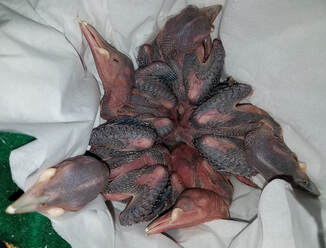 Hatchling Northern Flickers
Hatchling Northern Flickers
How old is the BABY?
Risk Factors:
- Hatchling - naked, maybe downy tufts, eyes closed. Rescue any that are on the ground.
- Nestling - feathers in shafts (pins) or small and developing. Small wings, downy tufts. Rescue any on the ground.
- Brancher - in between stage, more developed than nestling, but not flighted or far from nest.
- Some branchers (robins, jays, sparrows, mockingbirds, a few others) get out into the trees, shrubs, and sometimes the ground at this stage. Lack of low branches and shrubs and vegetation puts them at risk.
- Fledgling - young birds that can fly, either right out of the nest (most common) or from the trees. Most will have no downy tufts, larger wings capable of flight, longer but not completely developed tails.
- Fledgling robins, doves, jays, a few others: a few birds leave the nest before they can fly very well. They spend some time on the ground or in low shrubs being cared for by the parents.
- Only 25% of our most common songbirds survive to November of the first year.
- Over 30% die as eggs and hatchlings from predation.
Risk Factors:
- No shrubs/vegetation - no place to hide.
- Predators - cats, raccoons, corvids (jays, crows, ravens), squirrels, chipmunks, and mice.
- Disturbance - humans, storms, fires/smoke.
- Poor nest location or poor design.
- Tree limbing or removal.
- Intentional exclusion by neighbors or the city.
|
HEALTH: IS THE BABY WELL OR INJURED?
Is the baby:
WHAT CAUSED THE BABY TO BE ON THE GROUND?
|
|
LOCATION: WHERE WAS THE BABY FOUND?
SITUATION: WHAT HAS/IS HAPPENING? (or best guess) This is in an injured nestling Scrub Jay. While parents might feed an injured young bird, they cannot fix injuries. Due to poor advice (not from us), this baby sat on hot cement and baked all day in the hot sun. Bad advice is prevalent with baby birds. Please consult songbird speciailists like Native Bird Care for advice on young birds. Even organizations or agencies that are authorities make poor and hasty decisions about baby birds. Do as this wise finder did, follow your gut. Call or Text us. |
How to Help Babies in Distress
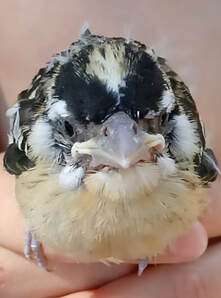
HATCHLINGS & NESTLINGS - text us.
Babies have different patterns of development. They can seem fine, when they are not.
- How long out of nest?
- Cold? Obvious injury?
- Dead siblings? Parents?
- Nest condition? Predators?
Babies have different patterns of development. They can seem fine, when they are not.
FLEDGLINGS (full or partially flighted, short to long tail)
- See list under "When to Rescue" above.
- Healthy fledglings will be actively hopping about and hard to catch.
- Fledglings with downy tufts and short tails can be placed up into a tree IF they are HEALTHY? See list.
- Fledglings that are easy to catch, listless, eyes closing, or otherwise don't look good, CALL for evaluation. Place into a shirt or somewhere warm.
- Fledglings that have any injuries, must come in.
- Fledglings with dead or missing parents must come in.
|
Open tree, shrub, and ground nesters can more easily be disturbed or feel the need to leave the nest. Nests are not safe havens, babies and adults are vulnerable when in them. These fledglings have some weak flight ability upon leaving the nest, and stay hidden in shrubs or trees. Goldfinch, House Finch, Sparrows, Warblers, and Hummingbirds are all open nesters. Babies can be scared out of the nest too soon. Predators can kill adults, and siblings. Tree removal and limbing in the Spring and Summer can be a death sentence for birds! Please only do this during the fall and winter. |
Fledgling birds know how to fly!
Many baby songbirds develop fully in the nest or cavity and fly out of the nest when ready, following their parents. For others, they get out of the nest but hang out in the vicinity of the nest, exercising their wings and making short flights. Ground nesting fledglings, like sparrows and juncos, stay hidden in the shrubs. Each species has it's own style of development and nest departure. Cavity nesters, like these Chickadees, can take more time in the nest because it is more protected from predators. All cavity nesting fledglings should be able to fly from the nest. |
When to Renest & How
Babies that fall out of nests do so for a reason - usually that is disturbance or predation.
- Renesting: IS DANGEROUS!
- Do not renest any baby bird without consulting with us and getting instructions. Many renests fail. House sparrows and starlings may be renested.
- Renesting is extremely risky. If predators raided the nest and you put the bird back, the predator will kill it.
- For many species, renesting when there is only one parent spells doom for that baby.
- If the baby is cold, dehydrated, has not eaten for several hours, then it will not survive renesting.
- If the baby sustained injuries - internal (can't see those) or obvious, the baby will not survive.
- Sometimes a nest box can be put up and the babies moved.
- HOWEVER, this should NOT be done if raccoons, jays, crows, ravens, or cats are in the area. Renesting is obvious, as is the box. We certainly do not want to just put the babies up just to have them eaten.
- For species that nest on a home, it is relatively safe to put a box up on a house. Flickers, Chickadees, Nuthatches, other yard cavity nesters can be placed here. In fact, this is how we exclude these species - we give them their own box.
- Species safe to renest: larger birds with aggressive parents - corvids, raptors, large owls.
- Open nests in trees are risky. Abird might be renested if it has both parents, no dead siblings, no predators in area (racoons, corvids, raptors, cats), in a well-hidden location, and with you paying strict attention to how you do it. Larger birds are generally safer than the little ones as the parents can defend the nest.
- Branchers can be put back up into trees but NOT if they are injured, cold, thin, missing a parent, predators.
Case Studies to Guide You.
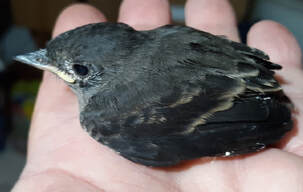
This Western Wood Pewee is NOT a fledgling. The finder was wise to help her. This species flies straight out of the nest. One of her siblings did just that. But this one and the other sibling fluttered to the ground and were too undeveloped to fly at all.
Look closely, you will see very small wings and no tail. Also, note the yellow around the bill. This baby is still a nestling. Staying on the ground would have been a death sentence.
This baby needs another week of development. The other sibling was strong enough to evade us and stay in the trees where her parents could feed her. This little one could not fly. Finding the nest was impossible and something spooked the babies out of the nest making the nest unsafe. She came into care and was reunited with her family once flighted.
Look closely, you will see very small wings and no tail. Also, note the yellow around the bill. This baby is still a nestling. Staying on the ground would have been a death sentence.
This baby needs another week of development. The other sibling was strong enough to evade us and stay in the trees where her parents could feed her. This little one could not fly. Finding the nest was impossible and something spooked the babies out of the nest making the nest unsafe. She came into care and was reunited with her family once flighted.
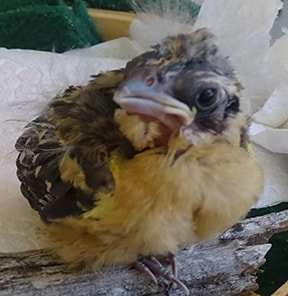
This nestling Black Headed Grosbeak was found on the ground and the parents were not seen for a full day. This species actually does get out of the nest at the brancher stage. The babies disperse into the shrubs and trees, separate from each other and hide out. They make quiet chirps to let the parents know where they are so they can feed them.
Being out on the ground in the open was a sign that this baby was in distress. In fact, the family had abandoned him. We could not find any parents or siblings.
This baby was sick, he had mites as well. This is likely why the family abandoned him. Clearly, he was a runt. He needed extra care to recover from whatever ailment he had. Likely, he was fed an insect with a pesticide on it. This is common. He survived with some dedicated treatment and care.
Being out on the ground in the open was a sign that this baby was in distress. In fact, the family had abandoned him. We could not find any parents or siblings.
This baby was sick, he had mites as well. This is likely why the family abandoned him. Clearly, he was a runt. He needed extra care to recover from whatever ailment he had. Likely, he was fed an insect with a pesticide on it. This is common. He survived with some dedicated treatment and care.
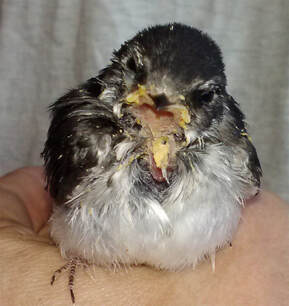
This nestling Tree Swallow was found on the ground, unable to fly, sitting listless, and easy to catch. Swallows are primarily an aerial insectivore (insect eater). Rarely will they glean insects off surfaces, like the ground. Swallows do land on the ground, for various reasons, but you would never catch a healthy one. Birds incapable of fleeing from predators (like us) are at risk.
This one was taken home and fed a store-bought baby food. This can kill a species like this. They lack the digestive enzymes for grains. Please do not attempt to care for birds.
Getting baby bird feathers dirty can result in loss of feathers. This can lead to bare patches as sometimes the feather follicle can be damaged. Bare spots in feathering can lead to a bird being unable to stay warm or protected from sun.
This one was taken home and fed a store-bought baby food. This can kill a species like this. They lack the digestive enzymes for grains. Please do not attempt to care for birds.
Getting baby bird feathers dirty can result in loss of feathers. This can lead to bare patches as sometimes the feather follicle can be damaged. Bare spots in feathering can lead to a bird being unable to stay warm or protected from sun.
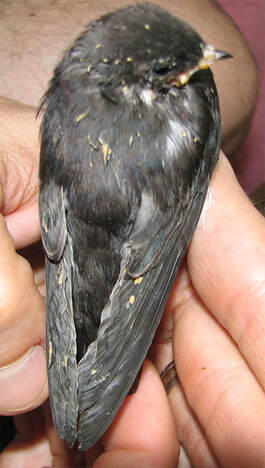
Even though this Tree Swallow has wings, they are not developed enough for flight. Her gunky face is hard to see, but she also has a lot of yellow around the bill, indicating she is not quite a fledgling.
Swallows of any species leave the nest entirely flighted. They might land on a nearby telephone wire, tree branch, or even the nest box. They will sit with their siblings getting fed and taking practice foraging flights. Some will simply shoot off into the distance.
Swallows of any species leave the nest entirely flighted. They might land on a nearby telephone wire, tree branch, or even the nest box. They will sit with their siblings getting fed and taking practice foraging flights. Some will simply shoot off into the distance.
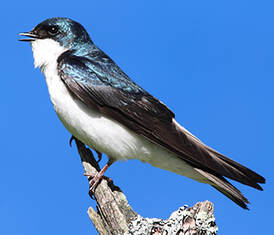
This adult Tree Swallow has fully developed wings, feathering, the tail is the same length as the wings.
The little one did come into care finally. She was fed the right foods, and given the opportunity to continue her development.
Sometimes parasites, poor weather, a lack of insects, and nest disturbance can result in a young birds leaving the nest before they are ready. That happened here.
Some of the babies may fledge and fly off, leaving the less developed (runts). These babes might jump out of the nest to join the flock but be unable to fly, landing on the ground, where they are easy prey.
The little one did come into care finally. She was fed the right foods, and given the opportunity to continue her development.
Sometimes parasites, poor weather, a lack of insects, and nest disturbance can result in a young birds leaving the nest before they are ready. That happened here.
Some of the babies may fledge and fly off, leaving the less developed (runts). These babes might jump out of the nest to join the flock but be unable to fly, landing on the ground, where they are easy prey.
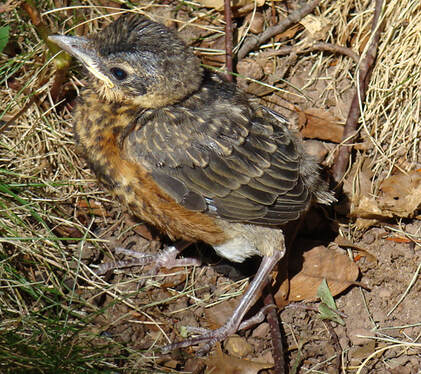
American Robins have a long development that leaves them not fully flighted once out of the nest. The term "fledgling" refers to a range of development for these birds. Young often 'fledge' (leave the nest) as young as this little one. Yet, they are not quite ready. The small wings and the amount of yellow around the bill tell us she is still quite young, not a fledgling.
I call these 'branchers', as that is where they are safest, in the branches of a tree, not on the ground. In a habitat with a lot of lush shrubs and vegetation, and low branches for them to ladder up, these little ones can do ok if there are no lurking predators and parents are actively feeding them. In Central Oregon where it is common for people to remove low limbs and native shrubs, for fire and aesthetics, these tiny birds have a hard time.
Nestlings like this can wind up skinny, injured, and cold. If they cannot get up into a tree or shrub with their siblings at night, then our cold nights can wear them down. Predators, like cats and raccoons, as well as jays, crows, and ravens, eat a lot of baby birds stuck on the ground here in Central Oregon. We just lack the dense shrubbery that gives safety. Of course, rivers and more natural areas have better habitat.
One should always ask, 'Why is this baby on the ground?' What happened? Perhaps a large storm blew her out. Perhaps a corvid or raccoon raided the nest. Perhaps the parents died and she is orphaned and hungry. perhaps there was a parasite infestation in the nest (mites for ex). Perhaps someone accidentally took her tree out. Etc, etc.
What we can do is look for the nest and the possible reasons. Look at her physically to see if she is suffering any disease, parasites, starvation, injuries, etc. Warm her up and if it's only a matter of wind blowing the nest, refashion that nest and let the parents care for the babies. Robins can be renested, but it takes times, professional evaluation, observation, and everything being perfect. We do renest robins, but frankly not that often as they often have something wrong. Text us.
I call these 'branchers', as that is where they are safest, in the branches of a tree, not on the ground. In a habitat with a lot of lush shrubs and vegetation, and low branches for them to ladder up, these little ones can do ok if there are no lurking predators and parents are actively feeding them. In Central Oregon where it is common for people to remove low limbs and native shrubs, for fire and aesthetics, these tiny birds have a hard time.
Nestlings like this can wind up skinny, injured, and cold. If they cannot get up into a tree or shrub with their siblings at night, then our cold nights can wear them down. Predators, like cats and raccoons, as well as jays, crows, and ravens, eat a lot of baby birds stuck on the ground here in Central Oregon. We just lack the dense shrubbery that gives safety. Of course, rivers and more natural areas have better habitat.
One should always ask, 'Why is this baby on the ground?' What happened? Perhaps a large storm blew her out. Perhaps a corvid or raccoon raided the nest. Perhaps the parents died and she is orphaned and hungry. perhaps there was a parasite infestation in the nest (mites for ex). Perhaps someone accidentally took her tree out. Etc, etc.
What we can do is look for the nest and the possible reasons. Look at her physically to see if she is suffering any disease, parasites, starvation, injuries, etc. Warm her up and if it's only a matter of wind blowing the nest, refashion that nest and let the parents care for the babies. Robins can be renested, but it takes times, professional evaluation, observation, and everything being perfect. We do renest robins, but frankly not that often as they often have something wrong. Text us.
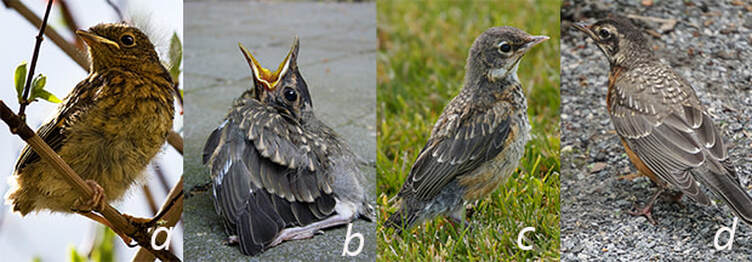
A. Nestling 'brancher' healthy & safe in the trees; B. Nestling, injured & cold; C. Fledgling, short tail, agile, healthy; D. Fully flighted fledgling. The first is safe up in a tree, the second should come in to care. C is likely fine if there is sufficient shrubbery and low branches.
Other Baby Birds
Adult Waterbirds
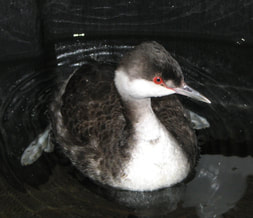
Grebes and other water birds:
Found a duck like bird on the road or parking lot?
Rescue! All downed waterbirds should come to rescue to be warmed, rehydrated, and checked for injuries.
1) Migratory waterbirds can accidentally land on pavement.
4) Waterproofing is often lost when landing. Bird in picture is NOT waterproof. Look for small dark hole at lower part of neck. Looks like a necklace. This is a spot that water can get past feathers and onto her skin. Causing hypothermia, and ultimate death.
5) Care: do not overly handle or feed waterbirds.
Found a duck like bird on the road or parking lot?
Rescue! All downed waterbirds should come to rescue to be warmed, rehydrated, and checked for injuries.
1) Migratory waterbirds can accidentally land on pavement.
- 2) Injury is common in landing or be why they landed.
4) Waterproofing is often lost when landing. Bird in picture is NOT waterproof. Look for small dark hole at lower part of neck. Looks like a necklace. This is a spot that water can get past feathers and onto her skin. Causing hypothermia, and ultimate death.
5) Care: do not overly handle or feed waterbirds.
- Food or handling can contaminate feathers, hurting their waterproofing.
- Dehydration happens fast. Birds cannot process food when dehydrated. Do not feed.
- Migratory waterbirds often cannot process food due to special migratory status of their intestines. Do not feed.
- Never place in bathtub- this kills waterproofing as their poop is full of oil.
- Waterbirds on ground are ALL COLD: place on thick towel, in box, place in warm room. TEXT.
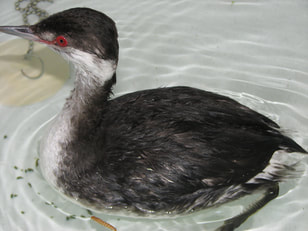 Non waterproof Horned Grebe.
Non waterproof Horned Grebe.
7) Getting waterproofing back. Please take bird to a rehabber...ONLY experienced rehabbers can do this...The bird will NOT get its waterproofing back in the wild....it will get hypothermia and die.
IF REMOTE: TEXT us for advice, we can assist you.
Please do not let children or pets near these birds.
Need Help? TEXT us we are happy to assist. Or if your rehabber needs advice, you may contact me at 541-728-8208 or by email at [email protected].
IF REMOTE: TEXT us for advice, we can assist you.
Please do not let children or pets near these birds.
Need Help? TEXT us we are happy to assist. Or if your rehabber needs advice, you may contact me at 541-728-8208 or by email at [email protected].
Proudly powered by Weebly
